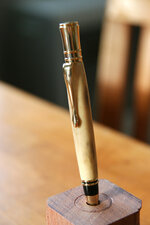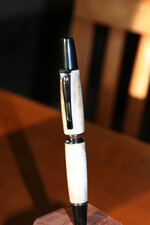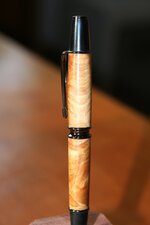Rick P
Member
Turned these three this evening, and executive in moose antler. A patrizio in Caribou antler and a Patrizio in birch burl. The burl came from root stock the road crew had dozered to the side, I stabilized it myself and this was my first try at a CA finish. Would one of you tell me exactly how you go about CA finishes please? I glued the brush to the barrel on my first coat so I switched to using my finger.......glued myself to the workbench at one point. I will say this CA is hard and really brings out the luster of the wood! Any suggestions on photographing antler? The pics are awful! Especially the caribou has far more color and variation than shows up, I did what I could in photo shop but........
It was really nice to turn wood again!
It was really nice to turn wood again!
Attachments
Last edited:



